Ikea Bag Backpack Tutorial
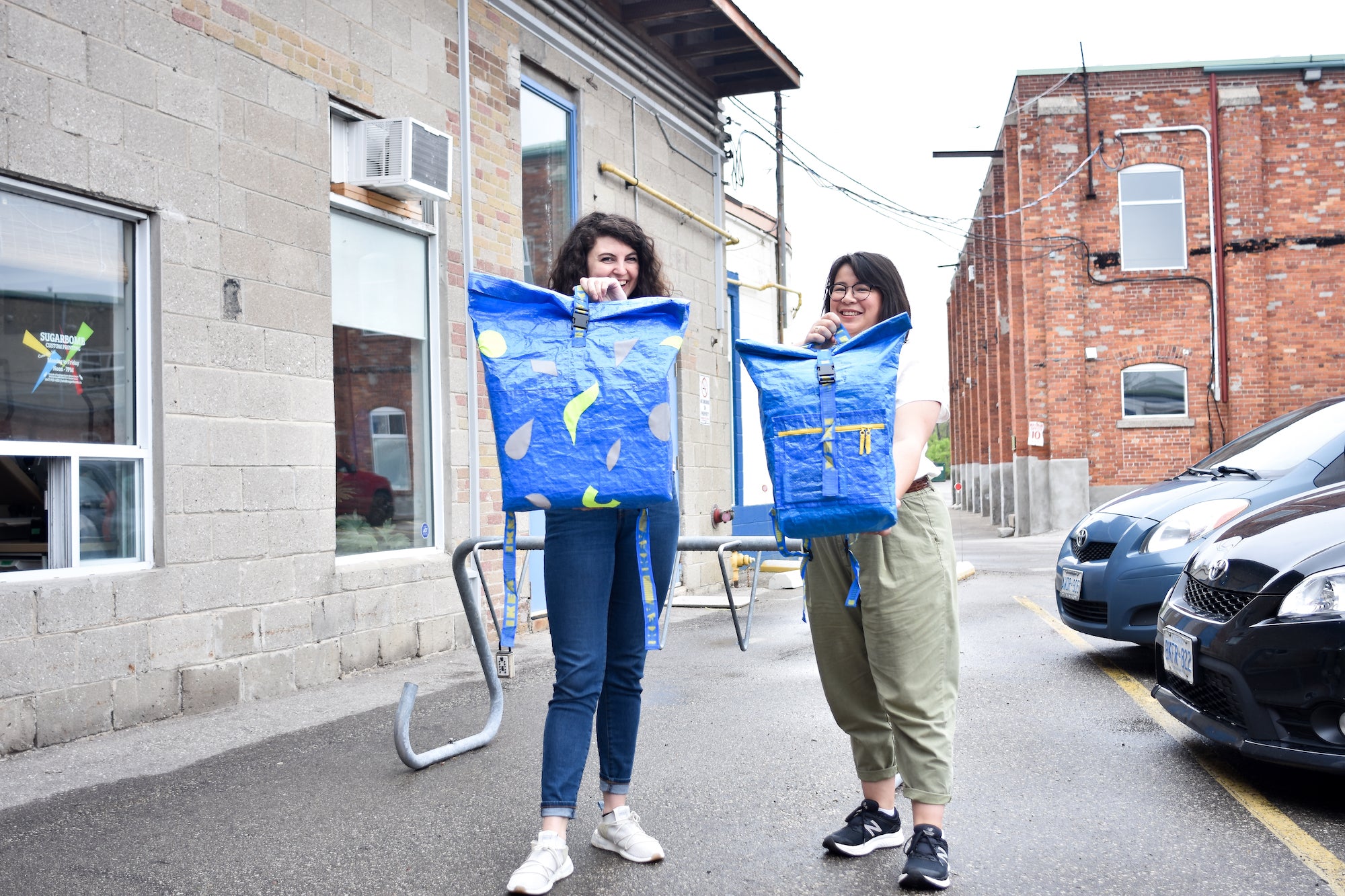

I have never owned a bag that I used more than a plain, blue, crinkly Ikea bag. I don’t carry a large purse - I either shove things into my coat pockets or use a small fanny pack. BUT I’m always carrying so much STUFF around - especially as a small business owner. I even came up with a special way to roll up an empty Ikea bag and twist the handle around the bulk of the middle like a crumpled up bright blue purse. For 9 months of the year I bike all my orders to the post office, and when things get busy in my online shop, my bike baskets are too small to do the job alone. This is when I came up with the idea to make myself an Ikea bag backpack - as a way to cram as many boxes and envelopes onto my bike and body as possible. I quickly cut two bags apart, sewed up the edges and threw on two of the handles as straps. It was messy, uneven, and not properly measured (just like most things that I sew for myself).
The original (crappier) backpack
That’s when Robin came in. Robin is my studio-mate, and owner of Fitzy - a leather accessory company. She’s the one that measures twice before she cuts and sews perfectly straight lines. Together, we decided to make my bag into an online tutorial so that you can make one too. We both personalized our bags to make them our own - I made mine bigger, with yellow reflectors sewed on the back - perfect for shoving shipping boxes into and popping on my bike. Robin made hers smaller, with a stylish yellow zipper. We hope that you enjoy making your own bag - please share your pics by tagging #lightandpaper

What You’ll Need
- sewing machine
- 2 small IKEA bags
- blue thread
- seam ripper
- scissors
- measuring tape
- binder clips
- masking tape
- Sharpie or marker

Turn the bags inside out. Use a seam ripper to remove the handles off both bags, being careful not to damage the bag or handles.

You should have 4 short straps, and 4 long straps.

Cut right along the side seam, and angled bottom seam of the bag. Repeat on the three remaining seams of the bags.

Now you should be able to lay the bags out flat like in the above photo.


Take one of the bags, and fold it in half, and sew along the narrowest crease at the bottom with a 0.5” seam allowance, and then again with a ⅜” seam allowance so that the seam is extra strong. We traced the line with a sharpie first to make it easier to see when sewing.


Once you’ve sewn along the crease cut off the excess fabric at the bottom of the bag, as shown, leaving a 0.5” seam allowance. Then cut the hem off the top of both sides of the bag, where the handles used to be. Be sure to save this extra fabric you’re going to use it later.

Take the second bag and cut along the longest edge on both sides, so that you have two rectangles measuring approximately 18" x 14"

You should have three pieces, the centre piece that you sewed, which is now the base of your backpack, and the two rectangles you just cut. You’re going to use these rectangles to extend the length of the bag, by sewing Side A to Side B.
Place the rectangle overtop of the backpack base with Side A and Side B aligned, use clips to hold the two pieces together, and sew with a 0.5” seam allowance. Make sure you’re not sewing through the hem edge (where the handles used to be) of the rectangle piece, and that your seam is on the same side as the seam on the base of the backpack. This way when we turn the backpack inside out, all the seams will be on the inside.

Repeat with the other rectangle.

You should now have something that looks like this.

Take the backpack, and fold it in half. Draw two lines to form an L shape, 3.5” from the side of the bag, and 3” from the bottom to create a square in the bottom corner. Repeat on the other side.

Cut along these lines so that your bag looks like this.
Cut down the sides of the bag so that it measures 18" by 29”. Use a straight edge as a guide to make sure everything is nice and square.
*Note* if you're customizing your bag with fun shapes like mine (see bottom) this is when would be best to sew them onto the front side of the bag. Make sure you sew onto the front outside of the bag (top seams go on the inside).
Sew the sides together using a 0.5” seam allowance along both sides of the bag.

Turn the bag right side out (so that the seams are on the inside). Place one of the short straps you took off the bag earlier on the top edge of the L that you cut out off the corner, with bottom of ikea strap facing bottom of bag. Clip the strap to the bag along this edge, but only to one layer of the fabric.
Repeat on the other side.

Turn the bag inside out. Fold out the corner so that it looks like the above photo, taking care to keep the strap from moving. Sew along this edge with a 0.5” seam allowance, and then again with a ⅜” seam allowance so that the corners are extra strong.
Turn the bag right side out. Your straps should now be on the outside of your backpack at the back corners. Those corners are back of the backpack where it will touch your back.
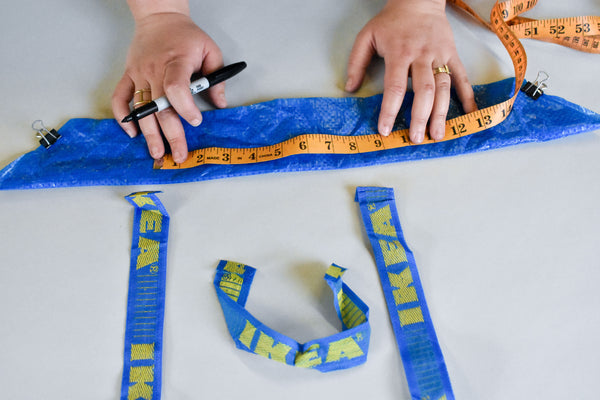
Now you’re going to make a patch using the leftover fabric, which will reinforce spot on the bag where you’ll attach the top straps and handle.
Fold the fabric in half, and measure a rectangle along the top folded edge that’s 9” x 2.5” ( 9” x 5” when unfolded) Cut the patch out, and then sew along the cut edges leaving a 2 inch gap along the centre of the longest edge. Turn the patch inside out through the gap you left along the edge, and fold the seams inside. You don’t have to sew this hole closed yet, we’ll do that when we attach the patch to the backpack.

Cut one of the short straps down to 11” long, this will be the handle of your IKEA backpack. Then take two long straps, the short strap, and attach them to the patch as shown.

Sew the straps to the patch using an x-box shape as pictured.

Take another one of the long straps and sew it to the centre of the patch using an x-box shape.

Measure 9” from the top of the bag, on the back side. Find the centre of the bag by folding it in half. Mark this point. Attach the patch to the back of the bag just below this point, aligning it so that it’s in the centre. Make sure your handle is facing towards the top of the bag, and the patch is blue side up, so that you can’t see the raw edges of the straps. Secure in place using masking tape. (Pins will damage the fabric of the bag.)

Sew the patch on to the bag about a ⅛” from the edge along all sides, removing the tape as you go.
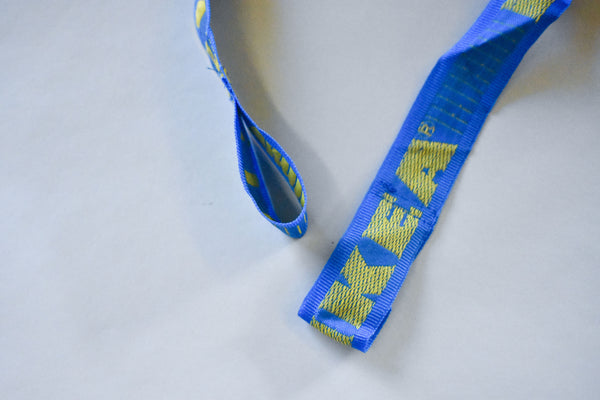
Cut down the two outer straps so that they measure 22” long. Fold the end of the long strap to create a small loop (about 2” long), and sew it in place. Make sure to fold the raw edge under, and use a double row of stitching for extra strength.

Measure 16” from the top of the bag on the front side. Attach the last remaining long strap at the with a x-box stitch, being sure to fold the raw edge under.

Finish the edges of all remaining straps so that they don’t fray. You can either burn them with a lighter, or fold the ends of the straps back on themselves twice and sew in place.
Put your bag on, and thread the bottom straps through the loops on the top straps. Pull to adjust to your desired length, and tie in place.

You’re all done! Enjoy your new bag.

BONUS: How I Customized My Bag

Because I bike with my bag, I had to keep it safe. I used some extra reflective fabric to sew some fun patterns onto the front of my bag. I cut the shapes out with scissors and sewed them to the front of the bag just before sewing the two sides of the bag together (note above where this step should occur). I used a zig zag stich for this step, and make sure to sew below where the tie will attach on the front. You can also do this step after you sew the entire bag, but it's hard to get the bag inside the sewing machine.
I added an adjustable buckle to the front of the bag, so that it’s easier to open and close. I adjustable sliding buckles to the straps, so that I can tighten and loosen the straps just like on a regular backpack. I also made my bag a bit bigger - as I knew I'd be lugging as many parcels as possible inside it. I basically made the backpack the entire size of the bags - if you'd like a larger bag, just don't cut the bags down, and work will all the fabric.

Check out how Robin customized hers at the bottom of her tutorial here!




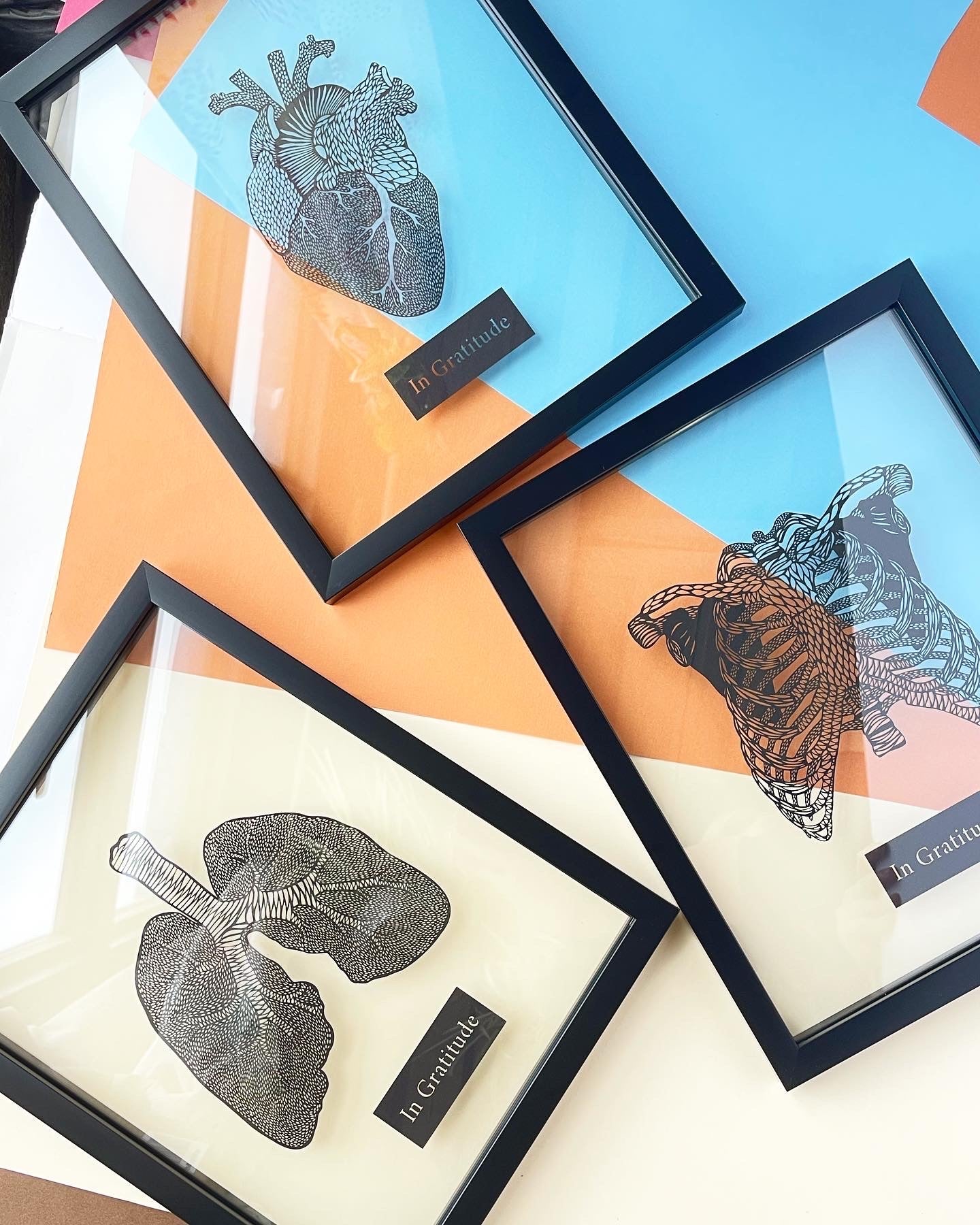
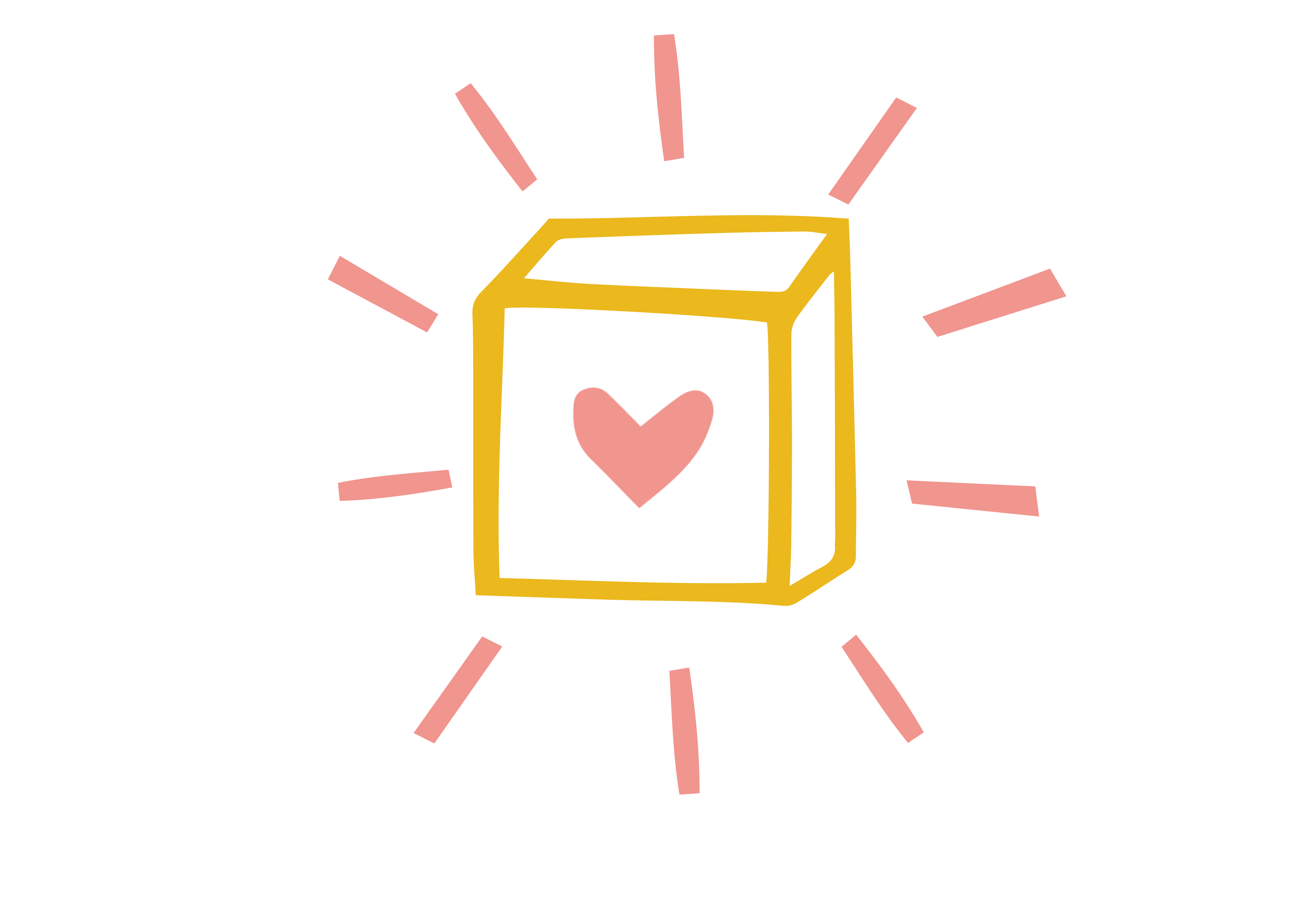
Comments